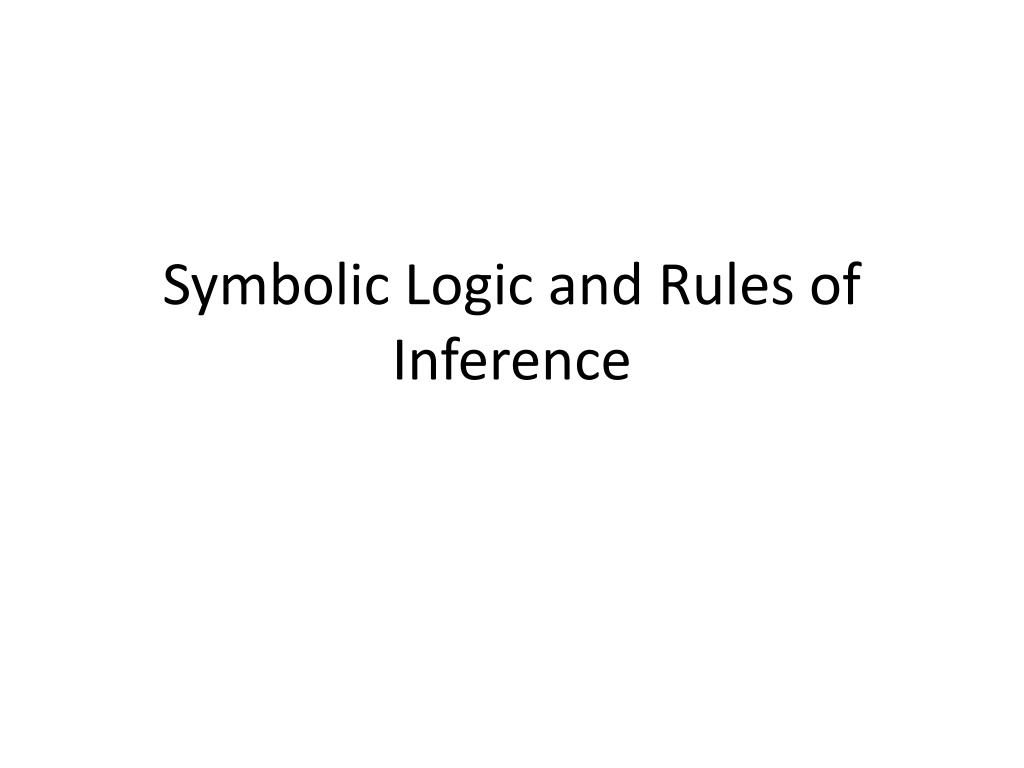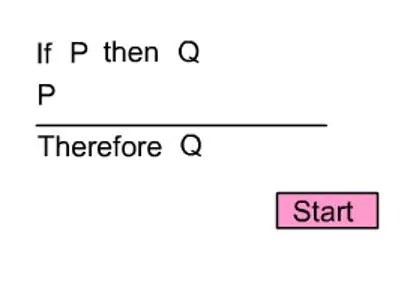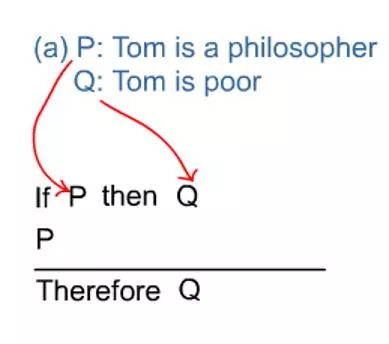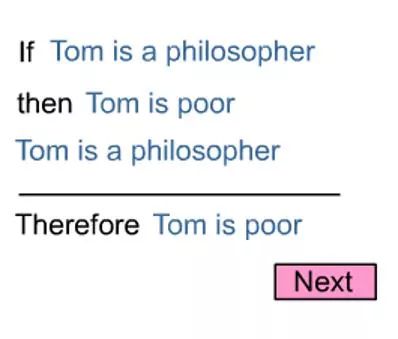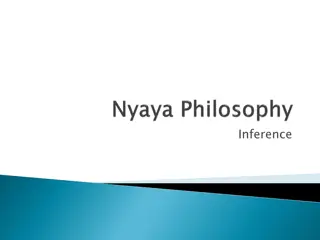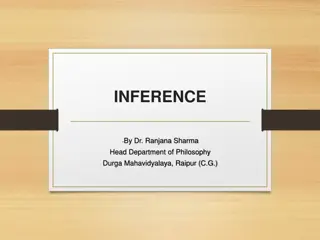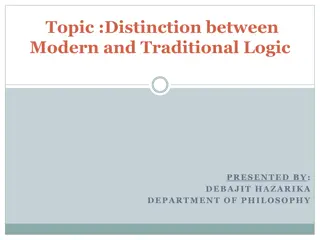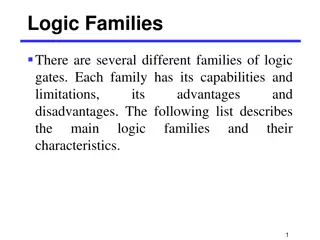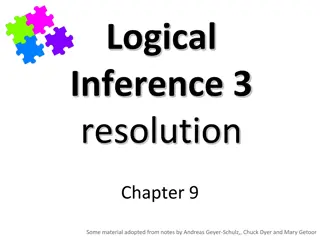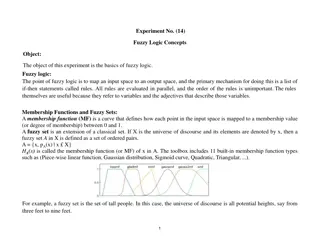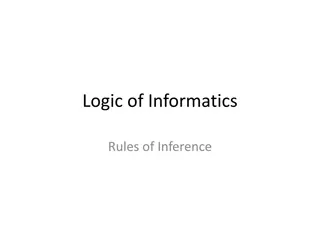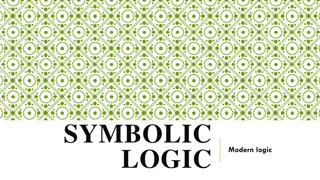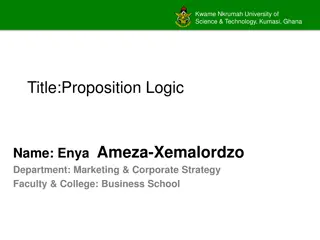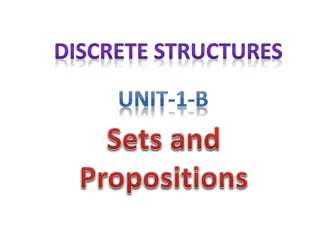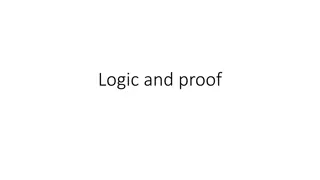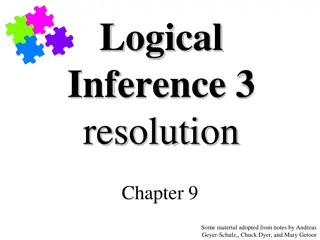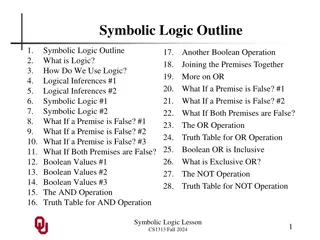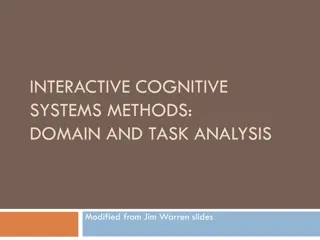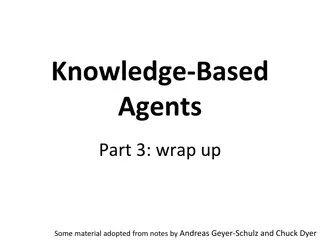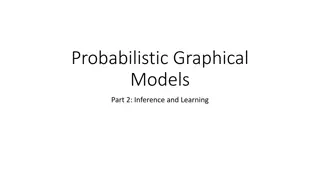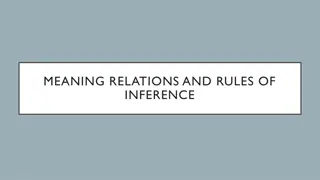Symbolic Logic and Rules of Inference
Explore the realm of symbolic logic and rules of inference through Modus Ponens, Well Formed Formulas (WFFs), truth tables, and more. Discover how logic is topic-neutral and test arguments for validity using truth tables. Dive into the world of logical equivalence and consistency with practical examples and resources for further learning.
Download Presentation

Please find below an Image/Link to download the presentation.
The content on the website is provided AS IS for your information and personal use only. It may not be sold, licensed, or shared on other websites without obtaining consent from the author.If you encounter any issues during the download, it is possible that the publisher has removed the file from their server.
You are allowed to download the files provided on this website for personal or commercial use, subject to the condition that they are used lawfully. All files are the property of their respective owners.
The content on the website is provided AS IS for your information and personal use only. It may not be sold, licensed, or shared on other websites without obtaining consent from the author.
E N D
Presentation Transcript
Symbolic Logic and Rules of Inference
http://philosophy.hku.hk/think/logic/ whatislogic.php If Tom is a philosopher, then Tom is poor. Tom is a philosopher. Therefore, Tom is poor. This is a valid form of argument, or Rule of Inference, called Modus Ponens.
Logic is topic neutral: rules can be used for multiple topics when the form is correct
Review of Well Formed Formulas: WFFs http://philosophy.hku.hk/think/sl/wff.php
Finding the main connective: http://philosophy.hku.hk/think/sl/wff.php
Describing the parts of a well formed formula statement:
Testing arguments for validity using truth tables: http://philosophy.hku.hk/think/sl/full.php P (P->Q) Therefore, Q Valid, no line has all premises true with a false conclusion.
Invalid argument Has at least one line where all premises are True and the conclusion is False: P->Q ~P Therefore ~Q This is the invalid line, where the premises are both T and the conclusion is False.
http://www.butte.edu/~wmwu/iLogic/ 3.2/iLogic_3_2.html Truth Tables with automatic completion from Butte College in California On this website, you can click each of the little buttons (they look like Play and Rewind on a remote control) to see how the truth table fills in!
That page also has special sections for single statements and pairs of statements Single: Tautology, Contradiction, Contingent Pairs: Logically Equivalent, Logically Contradictory, Consistent and Inconsistent
~ v Truth Functions (how the operators are true or false)
Truth Functions written out in English: ~ changes the truth value of whatever it has scope over from T to F and from F to T; note that some ~ are on letters and some are on brackets or parentheses. is only True if both sides are True, T T. v is only False if both sides are False, FvF. If there is even one T on one side, or T on both sides, the v is true. is only false in a line where T F, because that s like a cause happening without the effect. Any other combination of T T, F T, or F F is T for the . is T as long as the sides match, T T or F F is True for the .
Order of Operations ~ v 1) Tilde ~ on single letters should be done right away, after the letters themselves are already done. 2) Connectors inside parentheses should be done next, after each side in the parentheses is done. 3) Tilde ~ outside of parentheses should be done next. Make sure you are changing the truth value of the connector column, not a side column. 4) Connectors that are in between two sets of parentheses should be done next. 5) Tilde ~ on big brackets, larger brackets [] and {}
